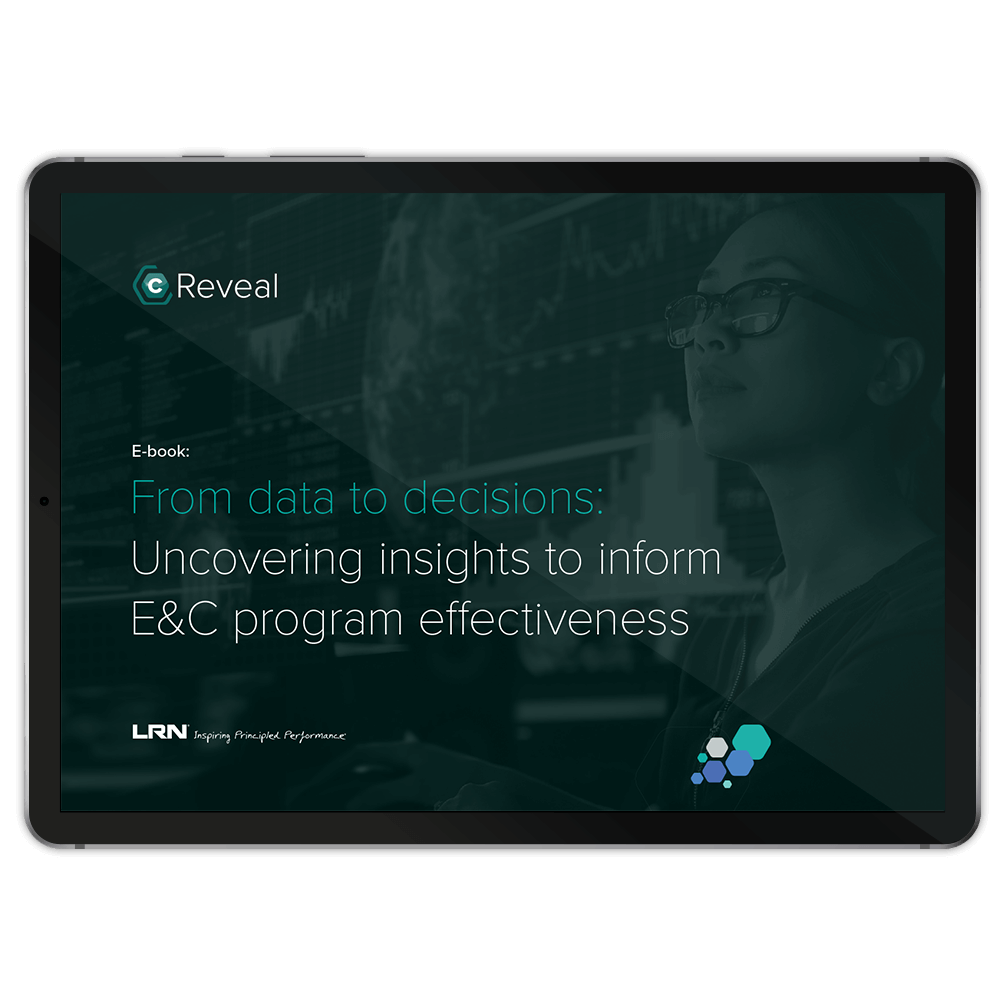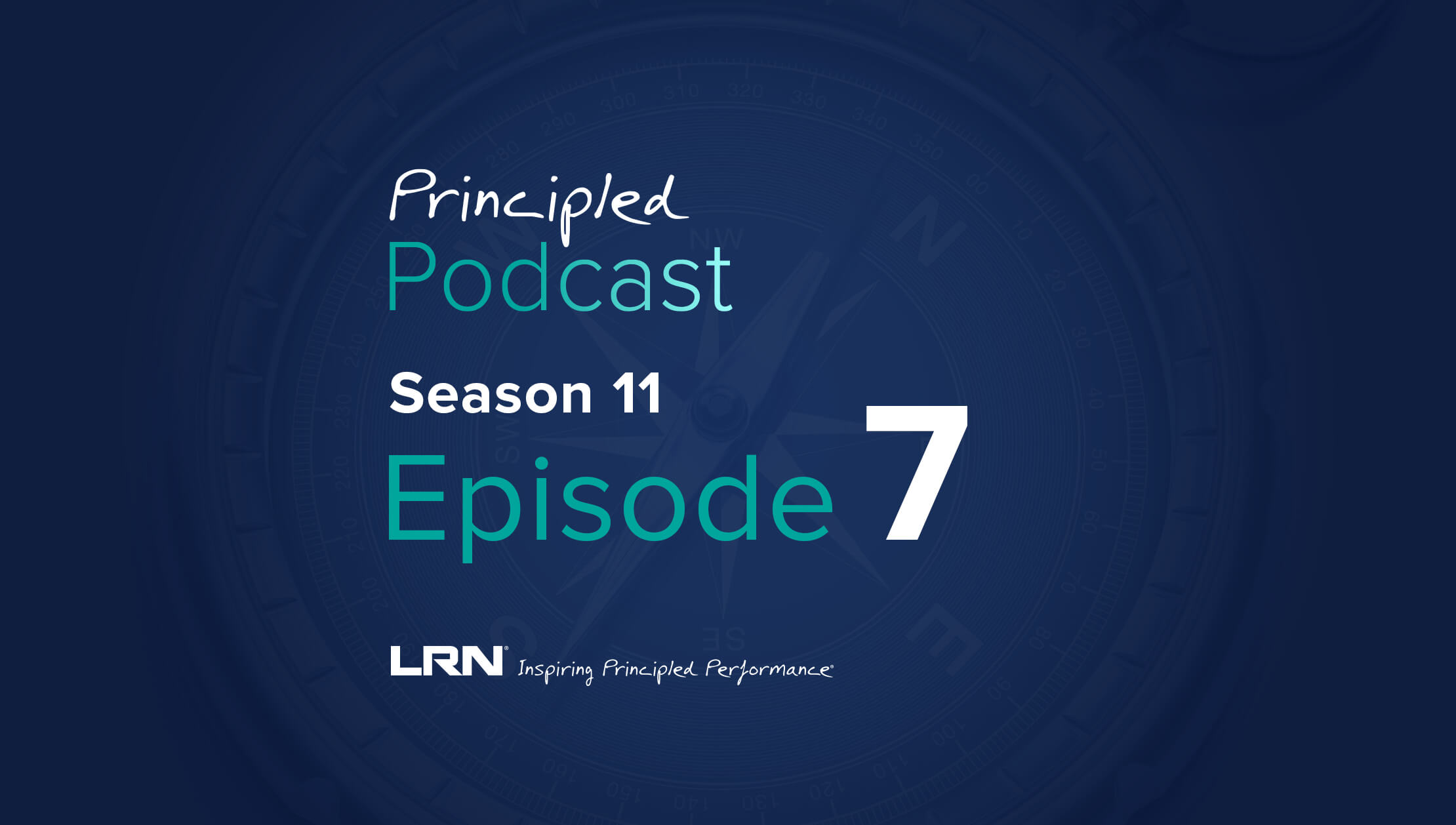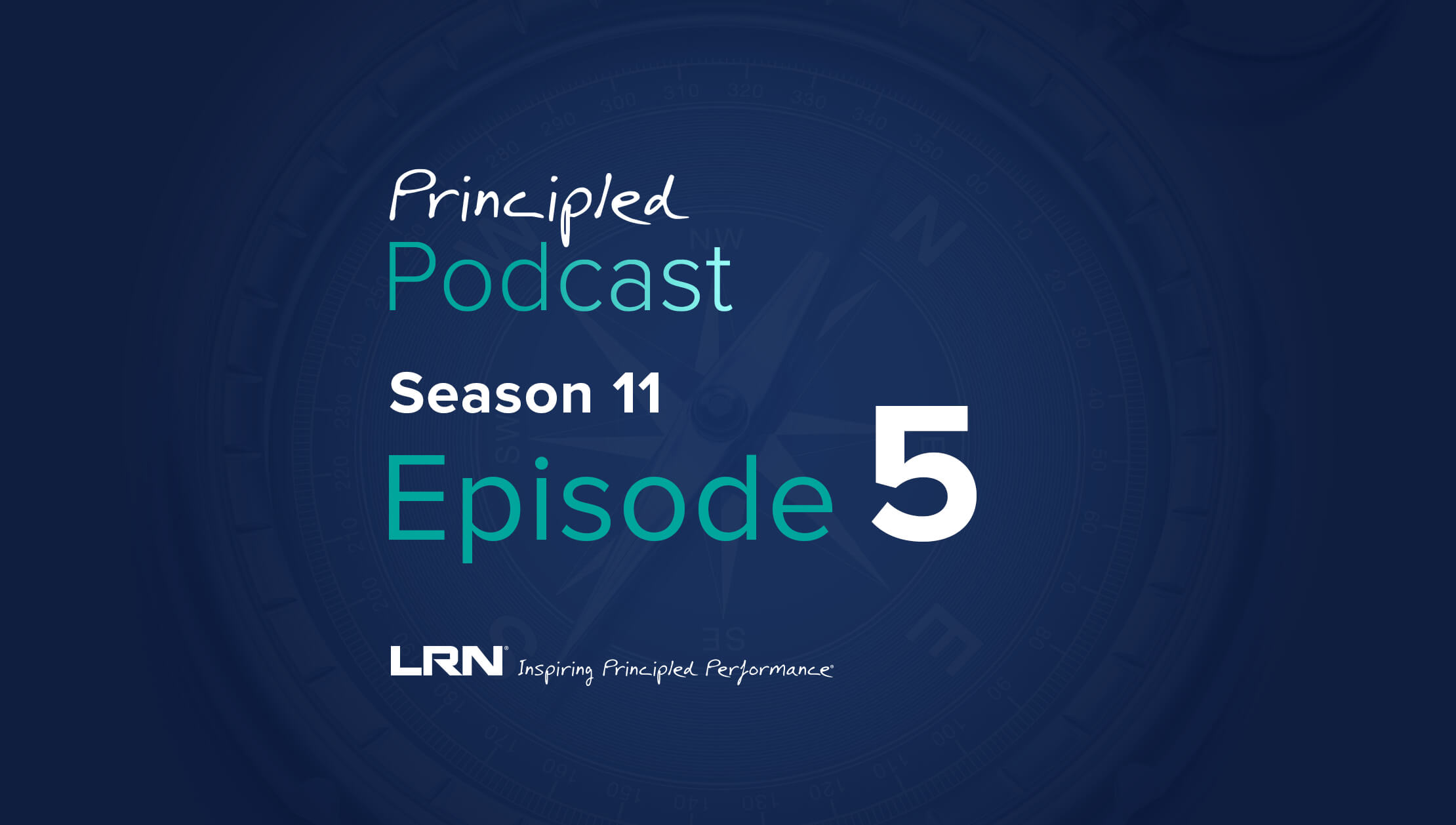Compliance data can provide a great deal of information about your E&C program effectiveness and what points are most important within your organization. However, if you aren't conducting compliance analytics on that data and keeping a close eye on overall performance, you may find it more difficult to institute effective compliance training or ensure that your organization is truly embracing the principles you claim to follow. In its March 2023 Evaluation of Corporate Compliance Programs update, the US Department of Justice (DOJ) called for ethics and compliance professionals to have “sufficient...access to relevant sources of data to allow for timely and effective monitoring and/or testing.” But data alone isn’t inherently valuable.
So, how can you use data effectively to glean insights and strengthen your ethics and compliance program? A new LRN e-book, From data to decisions: Uncovering insights to inform E&C program effectiveness, explores four key use cases to easily leverage data to enhance program efficacy, ensure your organization is operating ethically, and strengthen your program to reduce risk. Let’s explore each of them.
Assessing ethics and compliance training impact
In order to determine the effectiveness of your ethics and compliance training, you need to know whether the program is actually working. Recently, worldwide export controls and sanctions have exploded. The DOJ has hired over 25 prosecutors for these areas alone, demonstrating the importance of learner comprehension across risk topics. In addition, the DOJ asks:
- How is the company measuring training effectiveness?
- How are they addressing employees who fail course testing?
- Is the company evaluating the impact of training on behavior?
These questions are hard for most organizations to answer. Although data is everywhere, it’s usually stuck in spreadsheets that require a lot of time and expertise to properly manage. Unfortunately, in many organizations, data sits on a spreadsheet without being given due consideration.
Consider not only how you are measuring training effectiveness, but also how that training is impacting overall behavior and how the company handles employees who are not able to pass the training modules. Effective organizations:
- Deploy "stealth" surveys that give more information about the number of attempts to master a subject.
- Offer real-time insight into completion rates.
- Utilize compliance analytics tools to better understand the impact of those attempts and that information.
By assessing the impact of your E&C training and regularly adapting based on that impact, you can further your goals and ensure that your organization is genuinely meeting its standards. Without regular compliance analysis, on the other hand, you will likely find yourself struggling to determine how your organization is performing and how your efforts impact the employees who are engaging with those platforms.
Understanding learner sentiment in compliance training
Often, it's difficult to accurately assess how learners are responding to E&C training. Frequently, new courses or requirements are instituted as a "just in time" measure, often in response to outside events or things that are important to employees. According to LRN's 2023 E&C Program Effectiveness Report, around 39% of high-impact E&C programs are already offering "just in time" training triggered by internal systems, including obvious needs identified by the business. Unfortunately, it can be difficult to gauge the effectiveness of these programs, since they are often instituted quickly and may need to adapt just as rapidly in response to changing circumstances, both inside the organization and out.
Often, public events or sentiment shifts, news, or key compliance issues or changes within an industry will trigger the need for new training. In order to determine the effectiveness of that training, organizations need to make sure that they are deploying the right measures to track learner sentiment and see what changes might be needed for that training program.
Embedding feedback within the training course can make it easier to gauge and understand learner sentiment, which can allow employers to adapt their programs to better fit the future needs of employees.
Reporting compliance data and analytics to leadership
Organizations must meet a number of key expectations from people all around them: their customers, organization stakeholders, and industry regulators, for example. Not only that, E&C teams often have small budgets, inadequate personnel to accomplish their goals, and poor buy-in from higher levels within the organization. However, in order to improve the impact of these programs, it's critical to not only capture key analytics data, but also to report them to leadership in a highly effective way.
According to LRN’s 2023 E&C Program Effectiveness Report, 59% of compliance professionals said collecting and analyzing data metrics that provide real-time-time insight into their program’s impact was high priority—yet only 20% said they have improved their ability to capture and understand such metrics.
That means that E&C program leaders must capture data in an effective way, including the data that is most likely to speak to leadership within the company. They may need to collect:
- Risk analyses
- Employee surveys
- Engagement reports regarding E&C resources
- Data about how and when employees speak out and how it has been impacted by compliance training
- Benchmarking against peer organizations
Furthermore, E&C teams must make those reports as soon as possible, while the data is still current and can have immediate impact. They should also present the content in a clear, digestible way that is easy for leadership to look over and, if needed, act on quickly and effectively.
Measuring company culture using compliance data and analytics
Culture is a key part of many organizations. Not only does your company culture determine whether your organization is a place where people want to work, it can determine whether you remain in compliance with key regulations and requirements, how much diversity you have within your organization, and even how employees treat customers. In its Evaluation of Corporate Compliance Programs, the DOJ asks how often culture is measured, how hiring and incentives support a compliant culture, and if they seek input from all levels of employees on management’s commitment to compliance.
Measuring ethical culture, however, can be a challenge, especially when you attempt to measure and analyze shifts and changes in culture. According to the LRN Benchmark of Ethical Culture Report, two key elements stand out: organizational justice, and trust. Without these two elements, people within an organization are less likely to behave ethically, to report unethical behavior or standards, and to speak out for justice and fair treatment.
Required training courses, including a code of conduct course, can go a long way toward ensuring that your company is meeting its ethical standards. A culture pulse checkpoint within those training modules can make it easier to clearly identify where your organization is, how it is progressing toward meeting its goals, and how employees feel about the measures you are taking. Deploying an ethical culture pulse survey is a highly effective way to gather that data and move toward higher levels of ethics and a better culture within your organization.
The key takeaway
Leveraging data and data analytics is crucial to not only building your ethics and compliance program, but also to maintaining those programs and determining their overall effectiveness within your organization. Not only do you need to collect essential data about your program, from how many employees are actually completing those training modules to how they feel about their effectiveness, you need to continue to measure their impact on your organization.
For more information and best practices, download the e-book From data to decisions: Uncovering insights to inform E&C program effectiveness today.



